A Book Worth Reading Every Year: Charlotte’s Web by E.B. White
In a few days I’ll begin my twenty-first year of teaching fourth grade; as I tell my new families every intro night, I’m going to keep doing it until I get it right.
As always, the year ahead is largely unknown territory; even so, there are some things that I know will happen. For instance, there will be days when it seems like the kids are utterly clueless, and there will be days when it seems like I’m utterly clueless; students will be stricken by strange stomach maladies that come out of nowhere (usually right after a hasty lunch followed by twenty minutes of running around on the playground) and disappear just as quickly. There will be computer troubles and copier failures at the most inopportune times, and chairs or even desks will mysteriously tip over, spilling their contents (human or otherwise) on the floor — inevitably, just as we’re beginning to dig into the mysteries of long division or at some other equally problematic moment. I could go on, but why bother? If you’ve ever been in a classroom, you already know it all.
And I love it; there’s nothing that I would rather be doing, and one reason is because there’s another thing that I know will happen — I’ll read aloud to my students, and it’s the thing that I look forward to most; it’s always the high point of our day.
Every year we get through several books. Some are old favorites that I often return to (The BFG, The Cricket in Times Square, Pippi Longstocking) and some are “new” books that I try out in hopes of adding to my stock of old reliables (The Enormous Egg made the rotation, but after reading The Phantom Tollbooth last year, I know I won’t be revisiting it — it’s not a bad book; it’s just not great for reading aloud). There’s one book, however, that there’s never any question about; every year I treat my kids — and myself — to E.B. White’s masterpiece, Charlotte’s Web.
I never read it as a child or to my own children when they were young (they got a lot of Oz, Narnia, and Doctor Dolittle), but I read it to my first class twenty years ago and it instantly took priority over all other books. One reason is that I nailed the voices right away; my Templeton is sharp, suspicious, and cynical, a quintessential wiseguy, while my Charlotte is patient and sympathetic but with an occasional touch of asperity, especially when the other animals are being selfish or mean. My sputtering Goose never fails to raise a laugh with her rapid-fire gabble, the sheep are great fun to do (it takes some work to put just the right amount of baaaa into your voice) and my gentle and sensitive but not-too-bright Wilbur will melt your heart. (Normally, I’m a reasonably modest person, but there you are. After two decades, I have every beat down pat, and I feel like I could go on a twenty-city tour with the book and close in Madison Square Garden to cheering crowds. Well… maybe that is a bit much. But I do read it very well.)
What makes it worth reading every year, though? What makes a seventy-two-year-old children’s fantasy with talking barnyard animals good enough to return to, over and over, for twenty years? Well, my long acquaintance with Charlotte’s Web has convinced me that E.B. White wrote a true classic, a timeless story that is very funny and deadly serious, that is sweet and silly and sad, that is genuinely (if modestly) profound and deeply humane, to say nothing of the fact that every beautifully crafted sentence is a pleasure to read.
It’s also honest. White never pulls his punches — death is death, a cold and lonely thing that everyone has to face, that breaks the hearts of those left behind. There’s not a whiff of condescension in the story; because White never talks down to his young audience, an adult reader doesn’t feel talked down to either.
The kids always love it. It still amazes me how attentive they can be to this old story and how involved they become in it, these children of the twenty-first century, who live in a technological world that was pure science fiction when I was their age and who will live on into a future that I simply cannot imagine. But Charlotte’s Web never fails to reach them, and when it reaches them, it never fails to move them.
And though Charlotte’s Web was published in 1952, in twenty years I’ve never had a single student express any surprise or dismay that there aren’t any computers, cellphones, video games (or even televisions) in the book. Trivialities like that don’t matter when you’re dealing with fear and friendship, faith and sacrifice, love, loss, and loneliness, life and death. When the chips are down, children have an unerring sense of what’s truly important.
Every year the kids prove that to me all over again, and last year they did it by giving me one of the greatest experiences that you can have as a teacher — one of them burst into tears.
I wasn’t mean to Jocelinn; I didn’t holler at her or write her name on the board — we had just reached the end of Charlotte’s Web. In the next-to-last chapter, I came to the part of the story where even the most fidgety children are the quietest, where I effortlessly have what all teachers want most — that mythical beast, their students’ complete attention. Wilbur is being loaded into his crate to go home after the fair:
But as he was being shoved into the crate, he looked up at Charlotte and gave her a wink. She knew he was saying good-bye in the only way he could. And she knew her children were safe.
“Good-bye!” she whispered. Then she summoned all her strength and waved one of her front legs at him.
She never moved again. Next day, as the Ferris wheel was being taken apart and the race horses were being loaded into vans and the entertainers were packing up their belongings and driving away in their trailers, Charlotte died. The Fair Grounds were soon forlorn. The infield was littered with bottles and trash. Nobody, of the hundreds of people that had visited the Fair, knew that a grey spider had played the most important part of all. No one was with her when she died.
It’s hard to read, always. If I can ever do it without my voice breaking, especially on that last sentence, I’ll know it’s time to hang it up. I held together well enough to get to the end of the chapter, and as I looked up from the page, I saw that all the kids were affected… and then I saw that Jocelinn was more than just affected — she was sobbing. (I don’t think that she had ever read or heard the story before, which is another reason to keep coming back to Charlotte’s Web — I get the priceless privilege of being the person who introduces most of my students to the book.) I went over and gave her a hug, and all the girls in our class did the same, and by the time I finished the last chapter, she was fine, though a little subdued.
The whole thing made me feel great, honestly. To see that the Tik-Tokized children of this digital, screen-dominated age can still be moved — even to tears — by a sweet, gentle story conveyed by nothing more than words — just plain words… well, it gives me hope. (We try not to get too sentimental, though. Once, after I finished reading the chapter where we meet Uncle, the obstreperous porker who beats Wilbur out of the blue ribbon at the fair, and who earns Charlotte’s displeasure because “He is too familiar, too noisy, and he cracks weak jokes”, I asked the kids what they thought eventually happened to the prize-winning pig. “Bacon!” they gleefully yelled.)
There has to be more than that, though, doesn’t there? I mean, this is a school, by gad! What about instruction, sir? Fair enough, and another reason to continue to return to Charlotte’s Web year after year is that it teaches — it teaches the kids the first time they hear it, and it still teaches me even after many readings (teaching that takes place with a lot of help from those kids, because one thing I found out very early is that if you’re doing the job right, you learn as much from your students as they learn from you).
For example, two years ago, three or four weeks after I had finished reading the book, we were talking about finding the theme of a story and I brought up Charlotte’s Web. What is the book really about? What did E.B. White want us to know after we had read it that we didn’t know before?
Now, I’m the teacher, so I know the answer. Charlotte’s Web is about the redemptive power of friendship, of course. I asked a few of my students what they thought and we talked about their answers, but no one gave me the one I was looking for, the “right” one. So I went to one of those go-to students that every teacher has. Lucas will give me the right answer; I was sure of it.
“Lucas, what’s the message of Charlotte’s Web? What did the writer want us to understand?”
“Nothing good lasts.”
Once I got up off the floor (ever have a ten-year-old kid smack you between the eyes with a two-by-four?) we talked about Lucas’s answer (and lest you worry, he’s not a morose or depressed child — quite the opposite). I instantly thought of a hundred things to support what Lucas said, in the characters, the plot, the setting, in the language that E.B. White used, and we talked about them, Lucas and other kids giving examples that I hadn’t thought of. Nothing good lasts is self-evidently the message of the book; it’s on every page, so obvious, so large as to be virtually invisible — to me, but not to an attentive child.
The song sparrow “knows how brief and lovely life is.” The crickets “felt it was their duty to warn everybody that summertime cannot last forever. Even on the most beautiful days of the whole year — the days when summer is changing into fall — the crickets spread the rumor of sadness and change.” When the young geese heard that song, they “knew that they would never be little goslings again.” Fern grows older and gradually loses interest in her animal friends; soon she will no longer hear their voices… or perhaps even remember that she ever did. Lucas of course supplied the capper, after I had brought up another incident from the story that came to my mind. “And Charlotte dies”, he said.
Class dismissed — we’ve done our work for today, and I need to go and lie down…
Charlotte’s Web, a book I’ve read every year since George W. Bush was president and that I know backwards and forwards (or thought I did), became a completely new book to me that day, more beautiful, more moving than ever, thanks to someone who’s supposed to be the one doing the learning. Nothing good lasts — so we have to protect those destined-to-vanish good things while they’re still within our reach, and cherish them in memory when they’re gone. That wasn’t in my plan book that day, but I’m so glad that we found the time to learn it, because isn’t it life’s most important lesson?
A book that can engage and amuse and instruct, that can make you feel the value of life and get you thinking about how it should be lived, is a book worth reading every year, and that’s the kind of book Charlotte’s Web is. I can’t wait to read it to my new class; I can’t wait to see how it makes us laugh this time around, can’t wait to see how it will move us, can’t wait to see what it will teach us.
Some people, I understand, just put on a video of someone else reading when it’s story time (Youtube is full of them) and go grade papers or attend to some of the thousand other pressing tasks that fill a teacher’s day. I don’t get that; reading to my kids is the best thing that I do, the most fun that I have. Nothing that I do is more important, and I wouldn’t give it up for anything — even if it does make me cry.
Thomas Parker is a native Southern Californian and a lifelong science fiction, fantasy, and mystery fan. When not corrupting the next generation as a fourth grade teacher, he collects Roger Corman movies, Silver Age comic books, Ace doubles, and despairing looks from his wife. His last article for us was Little Madhouse on the Prairie: Wisconsin Death Trip
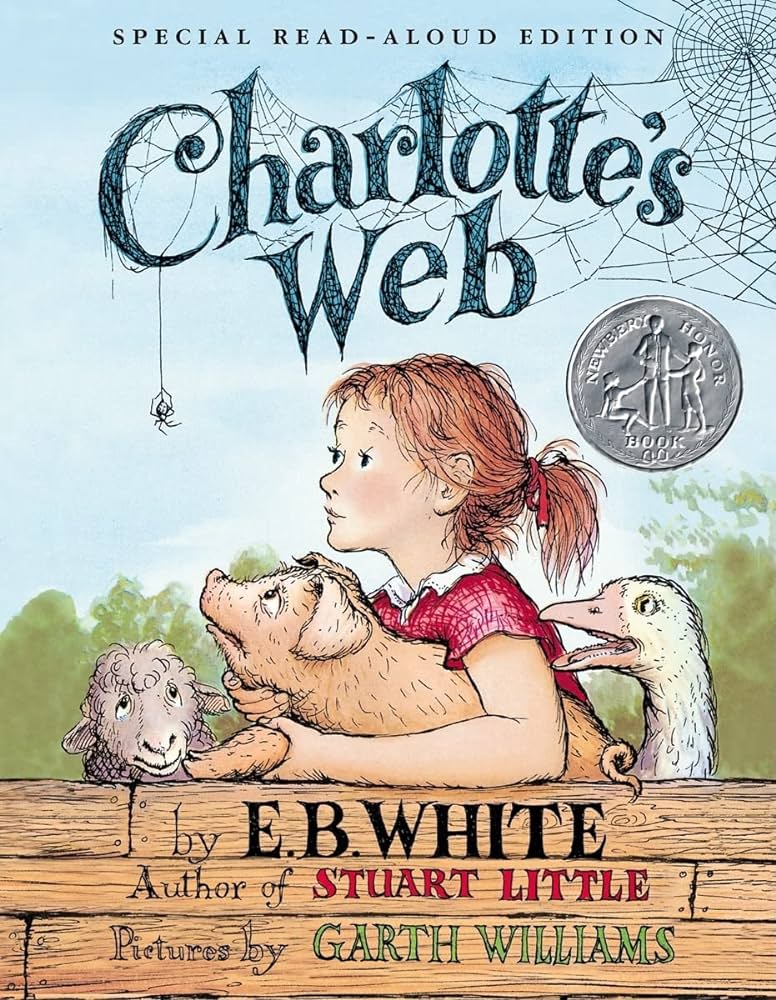
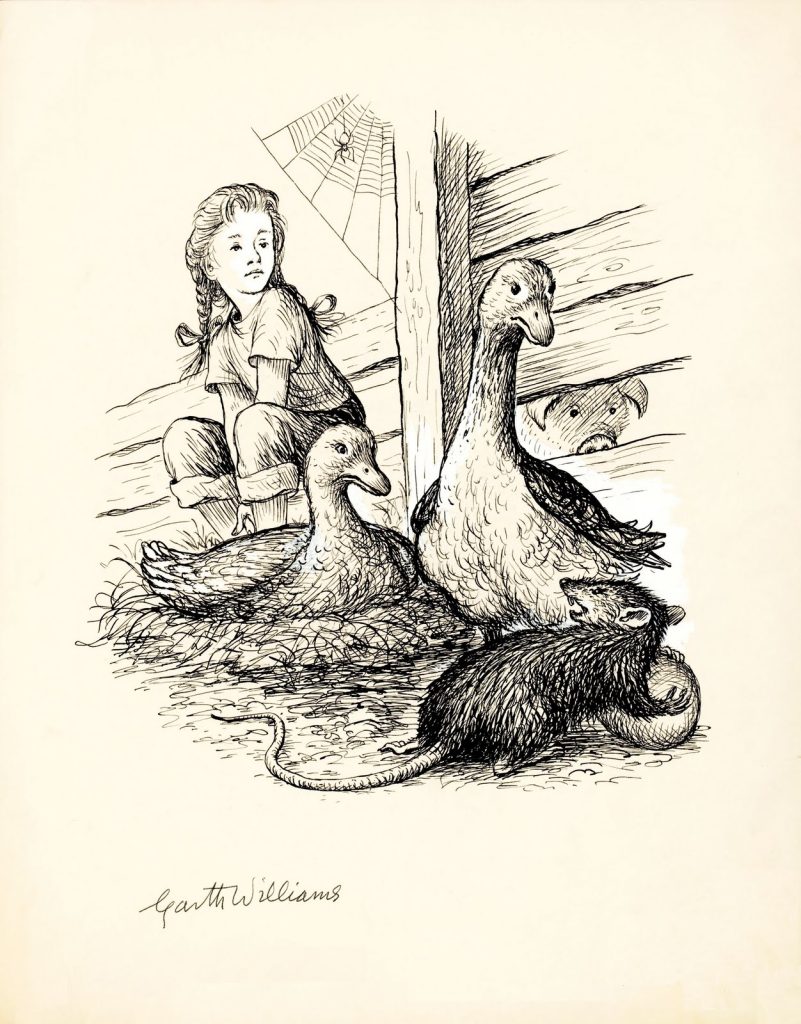
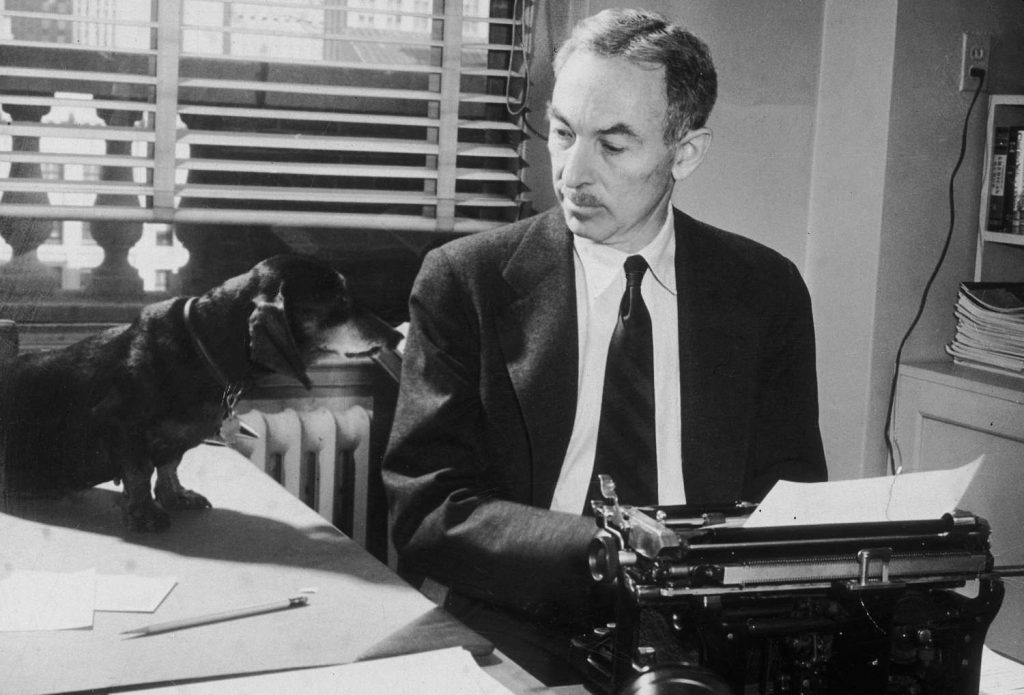
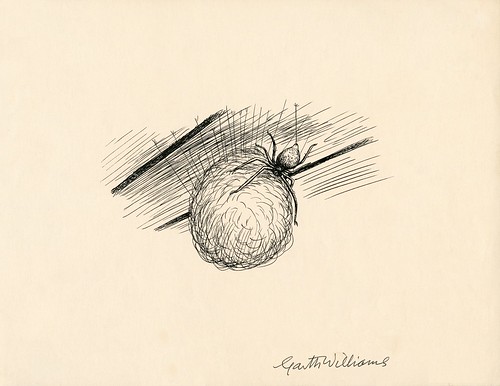
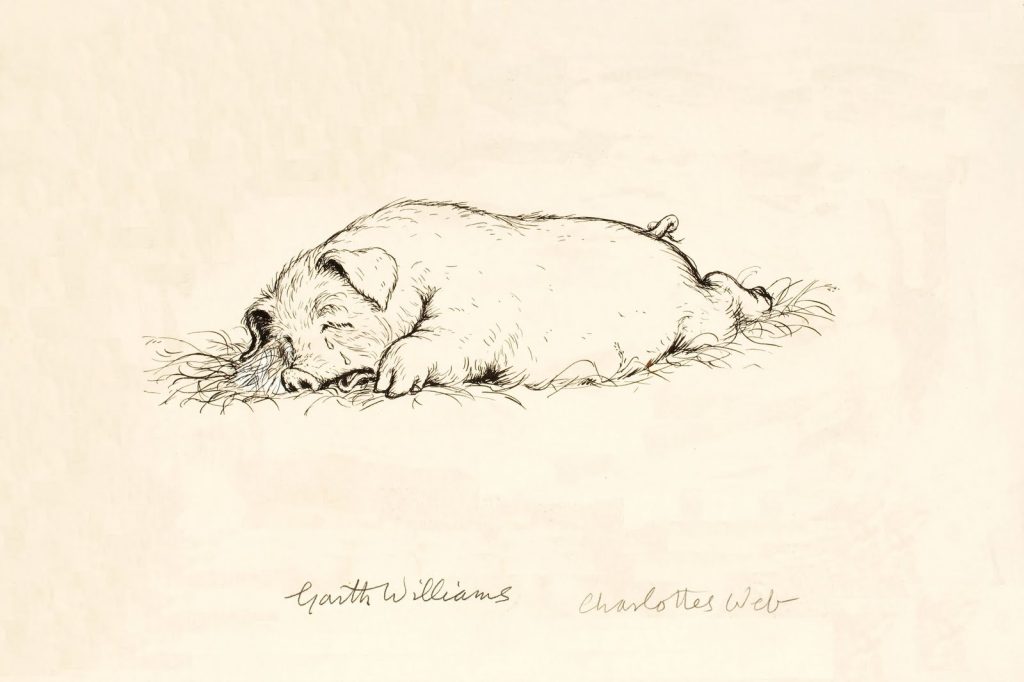
Thank you for this; it brought me back to my 4th grade year. I’m sure other teachers had read to our classes, but right now, I’m only remembering Mrs. Fridley, Roald Dahl, Laura Ingalls Wilder, and Charlotte’s Web. I’m pretty sure I’d read it before, and probably seen the animated movie on TV (Even then, I was already a fan of Paul Lynde’s snark).
You are utterly correct, it is a book worth reading every year, and your fourth-graders benefit greatly from your fortitude. Because Lucas’s theme is what makes it so difficult to read more than once a decade for mere, non-teaching mortals… and Charlotte is one of those rare fictional characters for whom a reader prays, begging a better ending beyond the book. The heart aches for her to be part of the “twice as much” restored to the prisoners of hope.
May I offer suggestions for some books to consider trying on your fourth-graders in the future, if you haven’t already discarded them? They are not as cuttingly edifying as White’s magnum opus, and I read them or listened to my mother reading them at a far more innocent time than now, but they were formative in developing a love for books and storytelling:
–E. Nesbitt Five Children and It
–Edward Eager’s “Tales of Magic” series (Half Magic, The Time Garden, and Seven-Day Magic being the best)
–Ogden Nash poetry collections (especially ones that contain “I’ll Take the High Road Commission”)
Nesbitt’s “The Phoenix and the Carpet” is also a winner (as I bet you know), and I remember enjoying Eager’s “Magic by the Lake,” part of the “Half-Magic” series. Very funny stuff.
“The Phoenix and the Carpet” sounds so familiar, Mark, but I can’t come up with a mental synopsis. Time to either re-read or newly discover! Thanks for bringing it up.
Oh, yes, “Magic by the Lake” was good, too. Eager hardly wrote a bad book. My softest spot will always be for “The Time Garden,” though. Thyme remains forever in my garden and spice cabinet because of it.
Phoenix is the follow-up to “Five Children and It.” I need to look for “The Time Garden.” Never read that one.
I believe I reviewed Magic by the Lake here on Black Gate. Look up my name and the search terms “Fantasy Out Loud.” : )
I’ve read Five Children and It myself and loved it, but it’s never occurred to me to try it out in the classroom (though I can’t think why not) – I’ll take another look at it.
I have read Ogden Nash to my class – I have a collection featuring Custard the Dragon. They love it.
I’m not familiar with Edgar Eager (great name!). I’ll check him out. Thanks!
You haven’t read Eager? Oh, boy, Thomas, are you in for a treat! Each book in the series can be stand-alone, but they’re much better if read together from the beginning. Hopefully you’ll enjoy them very much. 😀
I look forward to investigating Eager – thanks! I’ve recently begun reading Tove Jansson’s Moomin books, and I love them. They’re not quite like any other children’s books that I know of, and I’ll probably be trying the first one out in class this year.
Eager’s prose is more accessible than Nesbitt. Nesbitt writes as if she were the last of the Victorians, and unlike “Charlotte’s Web,” it might require some translation/explanation for younger readers/listeners. But the stories are wonderful!
I have yet to get a handle on White’s “Stuart Little,” but “Charlotte’s Web” is incontestably brilliant, and I appreciate your taking the time to stake that claim. I can’t read the end out loud––at all. (I salute you for getting through it with no more than a crack in your voice.) The other piece of children’s literature that I can’t possibly read aloud is the final chapter of “The House at Pooh Corner.” Your student is correct: nothing lasts forever.
I didn’t like Stuart Little much the first time I read it, but the book has grown on me, as has White’s other children’s book, The Trumpet of the Swan. Neither of them is Charlotte, though.
I like Stuart LIttle quite a bit, but I agree that Charlotte’s Web is the best. It certainly brings me to tears. And it doesn’t siminish — I reread the first Dr. Dolittle book a few years agon and was terribly disappointed. (Though I think some of the later ones are better.)
I don’t know if this would work for reading in class, but I adored George MacDonald’s At the Back of the North Wind in those days. (Lots of other good MacDonald, too — The Princess and Curdie, The Light Princess, The Golden Key.)
Also of course The Wind in the Willows.
My acquaintance with MacDonald is limited to Lilith, The Golden Key, and some of his religious writings. I’ve always wanted to read Curdie, North Wind etc. but you know how it is. You’ve put the spur to me, though, and I vow to get to at least one of them fairly soon.
Ah Thomas, that was the most wonderful thing I’ve read in a long time, thank you. I have a copy of Charlotte’s Web but haven’t read it since I was a child. I haven’t dared do so because of the intense emotion it elicited. I was the child in my class that sobbed his little heart out.
When the movie Babe came out, I took my young children to see it at the cinema. At the end of the film, they got up to leave and I told them to sit until the credits ended. That was because I had tears streaming down my face from when farmer Hoggett looked down at Babe and said, “that’ll do Pig” and I was embarrassed that the other adults would notice. Those tears never fail to flow every time I see the film.
They flowed again reading your wonderful account. That quote of Charlotte’s passing doomed me. Thank you, Thomas, for reminding me why this is such a joyful and special book that should be re-read, despite the risk of pain and grief.
Thanks for bringing up Babe, David – he’s definitely my second favorite adorable talking pig!
Around this house, any time something gets settled, we say, “That’ll do, pig.” Once in a while, strangers overhear and wonder why I’m calling my wife or my kids pigs. Or vice versa. We figure if they don’t get it, well, we didn’t want to talk to them, anyway. LOL
As for tears shed over “Charlotte’s Web,” including Mr. Parker’s wonderful homage, have you tried reading the end of “Watership Down” lately? Oh, my!
Yes Mark, same with Watership Down, not to mention the ending of Duncton Wood.
E. Nesbit was Victorian so her prose will seem less accessible than some later writers. But oh what a writer! Aside from the Five Children and It trilogy, she also wrote about the Bastables. There is a joke on the first page that one of the Bastable children is the narrator but he bets you still won’t know who it is by the end of the book. Of course, the reader has guessed by the end of the first page. That should be a joy to read aloud. However, they are not fantasy and the children might seem a little twee at times. The last of the Psammead trilogy is The Story of the Amulet which is dark, powerful and has a very rewarding ending. But there are the later works, which many people dismiss. The House of Arden and Harding’s Luck are parallel narratives about travelling in time to past events. Harding’s Luck also contains some vivid descriptions of poverty and slum life in Edwardian London. For me, though, her two best books are The Enchanted Castle and The Magic City. The Enchanted Castle can be quite terrifying, as a group of children enter said castle and find statues coming alive and wishes not quite coming out the way they should. The Magic City is about a boy who builds a city out of books, chess pieces, toys, salt cellars – whatever he can get hold of – then magically enters it to find himself on a journey through all the play cities he has ever built. Nesbit’s imagination was riotous, anarchic and playful. Oh and Edward Eager was very good too.
I love the children’s books I can reread as an adult and still like to read some of the newly published ones, particularly fantasy/sf. What about Tom’s Midnight Garden?
One of my most-loved books when I was a kid was Henry Winterfeld’s Detectives in Togas, about schoolboys in ancient Rome who team up to solve a mystery. I kept it more or less constantly checked out of my local library. I have a paperback copy and it still golds up very well, but I’ve never tried reading it in class and likely never will; vocally distinguishing between the seven boys is beyond my talents – or my memory!
What a wonderful book. I should reread it. I have it on my shelves
I am the Grand Niece of E.B. White. He and my Grandfather White were brothers. I live on the White Farm in Northern Massachusetts! I am delighted to read your story Thomas!
In 1982, Uncle EB mailed to me a record album of HIMSELF reciting the story of “Charlotte’s Web.” I cherish listening to his words. I hope you have enjoyed the opportunity to listen to his voice? It is now available on a CD, probably in your local library! Enjoy!
Ms. Morand, thank you so much for your kind words – I will definitely seek out the recording, even if it means that my reading will have to drop to #2, even in my own regard!
Thank you, Thomas, for your enchanting essay. I am currently rereading Charlotte’s Web. It’s been quite a while since I read it as a child (last week I celebrated my 73rd birthday) and also some years since I read it out loud to my class of second graders. Everyday I would sit in the tiny Reader’s Chair in the front of my room where my class would sit tailor style on the rug and listened enraptured. When I reached the end and Charlotte died, I cried. I remember saying to my class as they stared at me in stunned silence, “Oh, children, I love this book so much.”